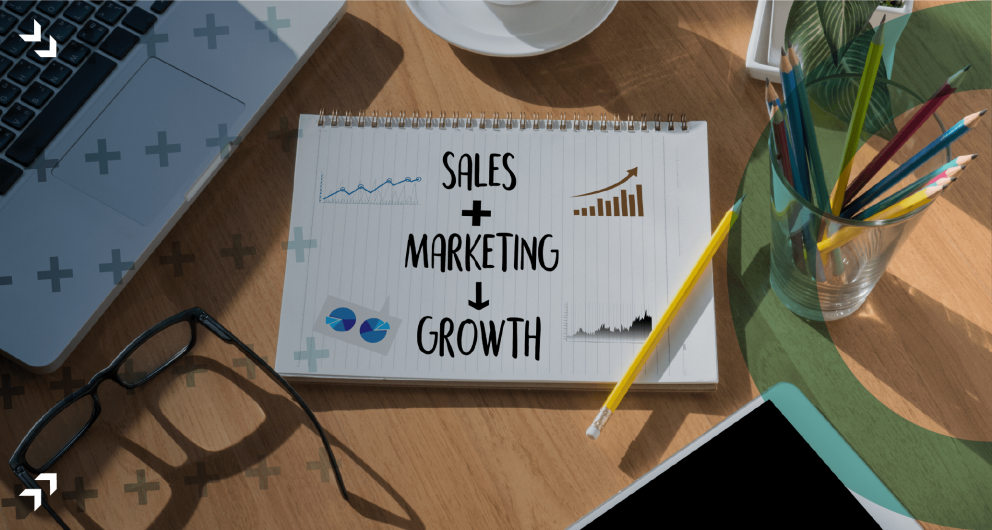- Coaches (3)
- Courses (25)
- Customer Success (10)
- Investment & Fundraising (6)
- Management & Leadership (34)
- Marketing (6)
- Prospecting (19)
- Sales (34)
- Sales Impact Academy News (23)
- Wellbeing (9)
An opportunity for prolific growth – Our learnings & insights from Supernode!

- Sales, Sales Impact Academy News
- Poppy Canning
- Estimated Reading Time: 9 minutes
Last week we sent Sam Butcher & Dillon McClernon from our SIA Partner team, to Philadelphia, to attend Crossbeams Supernode Conference; ‘A conference for those who grow and scale partner ecosystems’.
2 days. 6 talks. 3 dinners. 17 speaking experts. And the most iconic statement…
That ‘partner ecosystems will be the most prolific and efficient growth lever that businesses can build in the coming decade’ (Bob Moore, CEO at Crossbeam). The insights the team walked away with are immense, and with a new-found motivation and inspiration for Partner, it’s only right they share what was learned.
The Big Questions!
– How do you measure your team outside of partner sourced revenue?
– How do you structure your team?
– How are you working with the Sales teams to understand and learn from patterns in the data?
– Is there a solution for measuring success on things not revenue-related?
Why Partner?
Company growth over recent decades has connected heavily to the ‘Predictable Revenue’ guideline, and when the audience was asked to raise their hand if they had read the book, more than 50% of the room confidently shot their hand in the air. But with a model now over 11 years old, we have to look in a new direction and not expect growth trends to remain the same. Partner-led growth is set to be huge over the next decade as a result.
There’s an increasing inefficiency of traditional Sales motions. Changes in go-to-market structure and destruction of siloed pipelines, are driving shared pipelines and CRM ecosystems. As a result, the hypothesis that the Partner ecosystem will be the next big driver for pipeline generation is more evidenced than ever – It’s a need to have, not a nice to have.
What is Partner Doing?
Interconnectivity of content & tools isn’t just a phrase for Partner teams. It’s the outcome of the core focus of those individuals. A willingness to think collaboratively and competitively in an ever-changing and rapidly growing market. The pairing of your product with your Partners; to advance tech, drive value, strengthen your mark share, and more.
Bob Moore said it, but Partner really is creating the opportunity for prolific growth through both sourced and influenced revenue. And perhaps even more than that.
Success metrics are typically tailored to partner sourced revenue – the direct sales that have a solid foundational line back to the partner. But the rise and acknowledgement of influenced revenue is greater than ever. The challenge isn’t getting the influence, it’s in proving the influence. It’s tangible and measurably different, but with understanding operational support, it’s not impossible.
Looking at trends in Stock-Market Change
There are tectonic shifts happening right now in the fundraising market. Previously, valuations were primarily made based on growth metrics, whereas now, venture capital funds and firms are transitioning their focus to companies that have both strong growth and efficiency metrics.
If you’ve achieved continuous predictability, have strong metrics and witness increasing deal values, you’re more likely to catch the attention of the VC. The next step is proving how you’re feeding your pipeline.
Partner drives efficient revenue through its various means, and Investors have started telling founders to hire Partnerships leaders. These individuals can develop a strategy to help the company build a robust pipeline and identify countless opportunities for influence, reducing the sales cycle length, increasing deal size, and multiplying inbound opportunity.
Based on testimonial from Sarah Wang, General Partner at Andreessen Horowitz, with these two investment opportunities available, Partner revenue was (and continues to be) the deciding lever when identifying reliable value.
Company 1: Scaling from $5M – $15M ARR = Pipeline fed by 100% traditional direct sales motion
Company 2: Scaling from $100M – $200M ARR = Pipeline 50% traditional and 50% Partner led
Starting or Scaling: How Do I Run Partner Successfully?
You want to drive predictable revenue. You want to be efficient and watch your metrics sky rocket. You’ve got to have a concrete sense of what you’re bringing to your Partner. The design of your Partner Program has got to be 1,000% complete.
To run a successful program, you need to:
– Define the steps/stages for the Partner to apply, become, onboard, and succeed in your program.
– Identify your joint value proposition. Make it apparent and design a campaign around the marketing of your combined value.
– Outline the benefits for the Partner (and for you), and ensure they are wanted & valued for your Partner prospect.
– Have a clear idea on how you’re bringing your partnership and joint value to the customer. How are you technically going to achieve this? And then, how are you going to market this?
That’s not all though. You have to first understand your KPIs and Objectives for Partner for your company, know your budgets and build a team with the right skills and resources to accomplish your mission.
Tech partnerships have taken off much more than traditional partnerships in recent years, and can drive your ROI numbers to real success. But do you have the resource to build an integration?
Transforming Team Structure
For a long time, recruitment for Partner teams was as simple as ‘anyone with Partner’ in their job title, with the hopes that would make them qualified. And even then, this hiring process was far down the line, when a company is ticking along with a headcount of 200+.
Trends now show that a Partner employee is often ranging between the fifth or tenth new hire, at a start-up…WOW!
Partnerships structure is evolving, too. Where you may previously have seen a team of Partner or Channel Managers, the rise of cross-functional team members is gaining real momentum. This is a team structure with a Partner Marketing Manager, Partner Operations Manager, a ‘PDR’ (like an SDR), a Developer (or member of the product team) and so on, and so forth.
In fact, we did meet some teams at Supernode that had a structure just like this. And our take? It’s definitely the way forward.
Taking the Next Steps
Partner has been in limbo for a long time, struggling to grapple at resources and gain spotlight as a true revenue driver in industry. But, no longer.
We’ve got a revised structure, impact, data, and even the software to carry us through. Partner Management and Account Mapping tools have been built to fully get behind and drive Partner.
The journey from inception of Partner, to where we stand today, already displays some phenomenal growth. What used to be elitist, is accessible and ready to scale! Plus, we’re in the phase of partner influenced revenue, rapidly overtaking partner sourced revenue.
Predictions For the Coming Months…
Based on our takeaways, incredible conversations and reinspired foresight, there are a couple of things we’re expecting to see as we move forward.
– Shifts in resource – Sales has SDRs, Account Management, Marketing, Revenue Operations & Enablement. We predict that a shift is approaching, where Partner gets all of this too.
– Tech partnerships will continue to take precedence and lead the Partner image, over a reseller or traditional partnership.
– Integrations will lower churn, as the product and customer experience excels. (To be fair, we stole this from Allen Alder, but we back it 100%)
That’s all from us and our Supernode learning, we hope our frantic note-taking was valuable for you too. Have more that you think we’d be interested in hearing? Let Dillon know at [email protected]!









